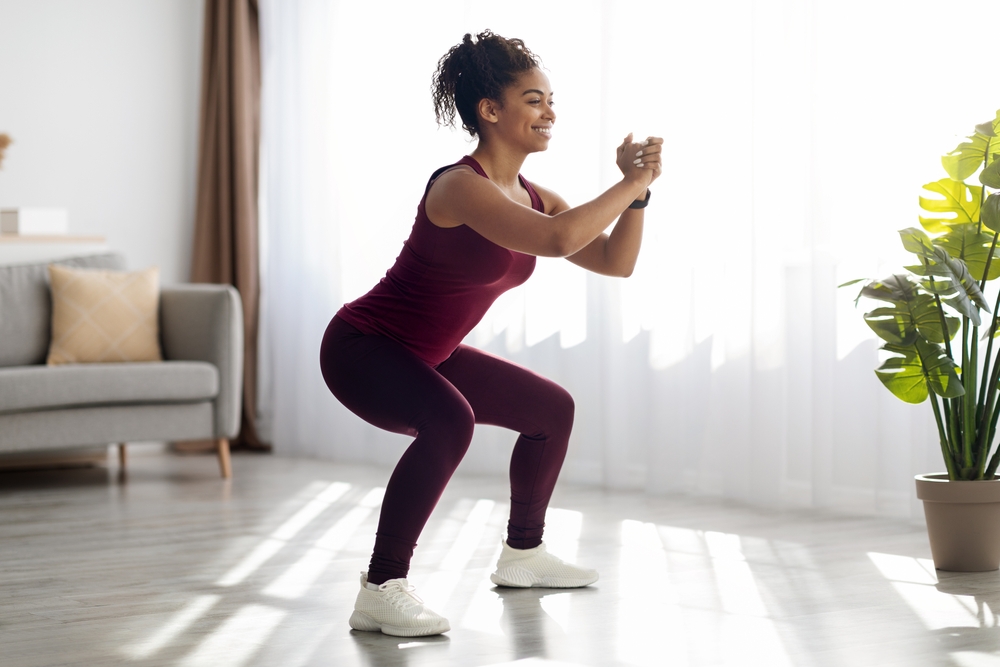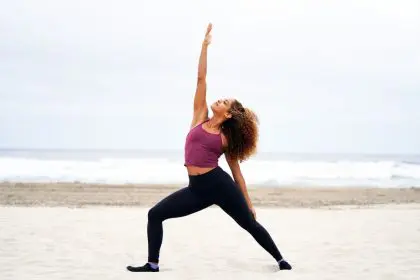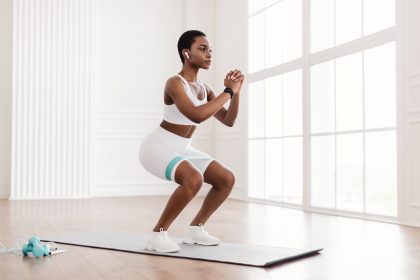Squats are a fundamental human movement pattern that plays a vital role in everyday activities, from standing up to lifting objects. Despite some misconceptions, this compound exercise is not only safe but can actively promote joint health when done correctly. Properly performed squats enhance mobility, strengthen muscles, and improve knee stability through regular practice, all contributing to a healthier and more functional body.
Scientific evidence supporting squats
Scientific research consistently supports squats as an essential exercise for knee joint health. The movement promotes the circulation of synovial fluid, which is crucial for joint lubrication and nutrient delivery, reducing the risk of joint degeneration. Moreover, squats help strengthen the muscles surrounding the knee, such as the quadriceps, hamstrings, and calves, offering a protective effect that enhances knee stability and prevents potential injuries.
A study conducted by the National Institute of Health confirms that squats activate not just the knee but also the entire lower body, creating a strong foundation for all kinds of movements. This strength-building process can lead to improvements in both knee function and overall athletic performance, making squats a vital part of any fitness regimen.
Benefits beyond knee strength
Squats provide numerous benefits beyond simply strengthening the knees. Regular practice can positively impact several aspects of physical health:
Enhanced joint mobility through full range motion
Performing squats with proper technique allows the joints to move through their full range of motion, which improves flexibility and mobility in the hips, knees, and ankles.
Increased muscle engagement across multiple groups
Squats activate multiple muscle groups simultaneously, from the glutes and quads to the core. This comprehensive muscle engagement helps improve overall lower-body strength, contributing to better posture and movement patterns.
Improved bone density through weight-bearing activity
As a weight-bearing exercise, squats contribute to improved bone density, which is especially important for preventing osteoporosis and maintaining bone health as we age.
Reduced pain symptoms in certain knee conditions
For those suffering from chronic knee pain or conditions like osteoarthritis, regular squat practice can reduce pain by strengthening the muscles around the knee joint and improving joint function. This effect is especially beneficial in preventing the progression of degenerative knee issues.
Proper form fundamentals
The effectiveness of squats largely depends on executing them with proper form. To get the most out of squats while preventing injury, start with the feet shoulder-width apart, with toes pointing slightly outward. Distribute your weight evenly across your feet, and avoid shifting it toward your toes or heels. As you lower into the squat, engage your core and keep your back straight. Make sure your knees follow the direction of your toes and don’t extend past your toes.
When coming back up, push through the heels to activate the glutes and hamstrings, while keeping the torso slightly forward for balance. This careful attention to form ensures that you maximize the benefits of squatting and protect your knees from strain.
Modification strategies
Not everyone has the same fitness level or mobility, so modifying squats to suit individual needs is important for safety and effectiveness. For those just starting, chair squats or wall slides can help build strength and teach the proper movement patterns. For those with knee issues, squatting with a wider stance can help reduce pressure on the knees. Resistance bands can also be used to assist with maintaining proper alignment, especially for beginners or those working on building strength progressively.
Additionally, exercises like box squats or goblet squats can provide extra support and reduce strain on the knees while allowing for muscle engagement. These modifications help individuals perform squats safely and with greater confidence, enhancing their overall fitness levels over time.
Managing discomfort
While squats are a beneficial exercise, discomfort can arise if performed incorrectly or if there are underlying health issues. Common causes of pain include muscular imbalances, joint instability, or improper technique. If discomfort persists despite proper form, it’s important to consult a healthcare provider, such as a physical therapist, to assess the situation and determine the best course of action.
Sometimes, discomfort can be attributed to tight muscles or weak stabilizing muscles around the knee. Regular stretching, foam rolling, and strengthening exercises can address these issues and prevent further discomfort during squats.
Rehabilitation applications
Squats play an integral role in knee rehabilitation, particularly after ACL injuries. Physical therapists often incorporate squats into rehabilitation programs to help patients regain strength and stability in the knee joint. Beginning with smaller ranges of motion, like mini-squats, patients can gradually rebuild their muscle strength and range of motion without putting excessive stress on the knee.
As part of a comprehensive rehabilitation program, squats help restore functional movement patterns and allow individuals to return to their regular activities more quickly and safely.
The evolving relationship between squats and knee health
The relationship between squats and knee health continues to be explored by researchers and clinicians alike. New studies and clinical observations shed light on how to optimize squatting techniques and modify movements to address specific knee conditions. This ongoing research helps refine our understanding of the benefits of squatting, ensuring that the exercise is not only effective but also safe for individuals with varying levels of knee health.
Professional guidance and personalized approach
For individuals with existing knee conditions or concerns about their squat form, professional guidance is crucial. A physical therapist or personal trainer specializing in proper exercise form can provide tailored advice and adjustments to ensure squats are performed correctly. Regular assessments and adjustments help individuals progress safely and maintain knee health.
It’s also important to recognize that everyone’s body is different. Factors like leg length, mobility, and past injuries may require modifications to squat technique. A personalized approach ensures that individuals can reap the full benefits of squatting while reducing the risk of injury.
Building a sustainable squat practice
A sustainable squat practice is built on consistency and attention to detail. It’s essential to progress slowly, starting with light loads or bodyweight squats, and gradually increase intensity as strength and mobility improve. Regularly assessing technique and making small adjustments as needed will ensure that squats remain effective and safe.
With patience, consistency, and proper form, squats can become a valuable tool in maintaining knee health, improving strength, and enhancing overall functionality. By focusing on the right techniques and listening to the body, individuals can experience the long-term benefits of squats without risking injury.














